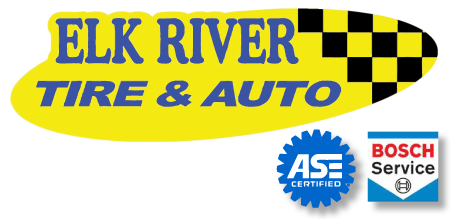People are hoping that winter's freezing temperatures are just about over. However, it may still be necessary that you schedule a radiator service to check the antifreeze/coolant mixture to make sure that it has not lost its protective effectiveness. Most drivers know that ignoring this important service could lead to a costly radiator repair!
You may be wondering which color of antifreeze is best for your vehicle. It used to be that no matter which brand of antifreeze you chose, the color was always green, mixed with water (50/50), and poured into the radiator. As the engine operated, the antifreeze performed its primary duties of carrying heat to the radiator, preventing freezing and protecting against corrosion in the cooling system. The antifreeze was simply changed at the prescribed radiator service interval.
However, because there are now numerous types of antifreeze technology that come in a rainbow of colors, ask for professional assistance from a radiator repair specialist. Most radiator service technicians agree that it is best to use the same type of coolant that was originally used by the vehicle manufacturer.
Proper maintenance is the key to longevity. The most important consideration is maintaining the cooling system's freeze point protection and coolant level. Almost all coolants work best at the ideal freeze point mixture, which generally is a 50/50 antifreeze-to-water mixture. At this level, antifreeze protects to -34°F and boil-over protection to 257°F. In addition, maintaining proper freeze point protection ensures corrosion inhibitors are present at intended levels.
There are 2 Radiator Problems that are the most harmful:
- A cooling system that is constantly low on coolant – This can create a corrosive environment due to the aggressive nature of the vapors of a glycol/water mix. These steam vapors are more corrosive than either fluid by itself.
- The water you use to mix the antifreeze -- It is best to use distilled water, not tap or filter when refilling any cooling system. Tap water contains minerals such as magnesium and calcium that can form deposits in a cooling system, especially on the engine's hottest parts. Premixed coolants are mixed at the factory with distilled water.
Tips to Remember: Check your owner's manual to know what the manufacturer recommended replacement interval for antifreeze/coolant for your vehicle (generally every three years or 36,000 miles).
Trying to prevent an urgent radiator repair? Contact our ASE Certified technicians at Elk River Tire and Auto today at (763) 441-2889 or go to www.elkrivertireandauto.com for more information about radiator service. Our auto shop in Elk River, MN proudly serves residents in the areas of Zimmerman, and Otsego, Minnesota.
People are hoping that winter's freezing temperatures are just about over. However, it may still be necessary that you schedule a radiator service to check the antifreeze/coolant mixture to make sure that it has not lost its protective effectiveness. Most drivers know that ignoring this important service could lead to a costly radiator repair!
You may be wondering which color of antifreeze is best for your vehicle. It used to be that no matter which brand of antifreeze you chose, the color was always green, mixed with water (50/50), and poured into the radiator. As the engine operated, the antifreeze performed its primary duties of carrying heat to the radiator, preventing freezing and protecting against corrosion in the cooling system. The antifreeze was simply changed at the prescribed radiator service interval.
However, because there are now numerous types of antifreeze technology that come in a rainbow of colors, ask for professional assistance from a radiator repair specialist. Most radiator service technicians agree that it is best to use the same type of coolant that was originally used by the vehicle manufacturer.
Proper maintenance is the key to longevity. The most important consideration is maintaining the cooling system's freeze point protection and coolant level. Almost all coolants work best at the ideal freeze point mixture, which generally is a 50/50 antifreeze-to-water mixture. At this level, antifreeze protects to -34°F and boil-over protection to 257°F. In addition, maintaining proper freeze point protection ensures corrosion inhibitors are present at intended levels.
There are 2 Radiator Problems that are the most harmful:
- A cooling system that is constantly low on coolant – This can create a corrosive environment due to the aggressive nature of the vapors of a glycol/water mix. These steam vapors are more corrosive than either fluid by itself.
- The water you use to mix the antifreeze -- It is best to use distilled water, not tap or filter when refilling any cooling system. Tap water contains minerals such as magnesium and calcium that can form deposits in a cooling system, especially on the engine's hottest parts. Premixed coolants are mixed at the factory with distilled water.
Tips to Remember: Check your owner's manual to know what the manufacturer recommended replacement interval for antifreeze/coolant for your vehicle (generally every three years or 36,000 miles).
Trying to prevent an urgent radiator repair? Contact our ASE Certified technicians at Elk River Tire and Auto today at (763) 441-2889 or go to www.elkrivertireandauto.com for more information about radiator service. Our auto shop in Elk River, MN proudly serves residents in the areas of Zimmerman, and Otsego, Minnesota.

